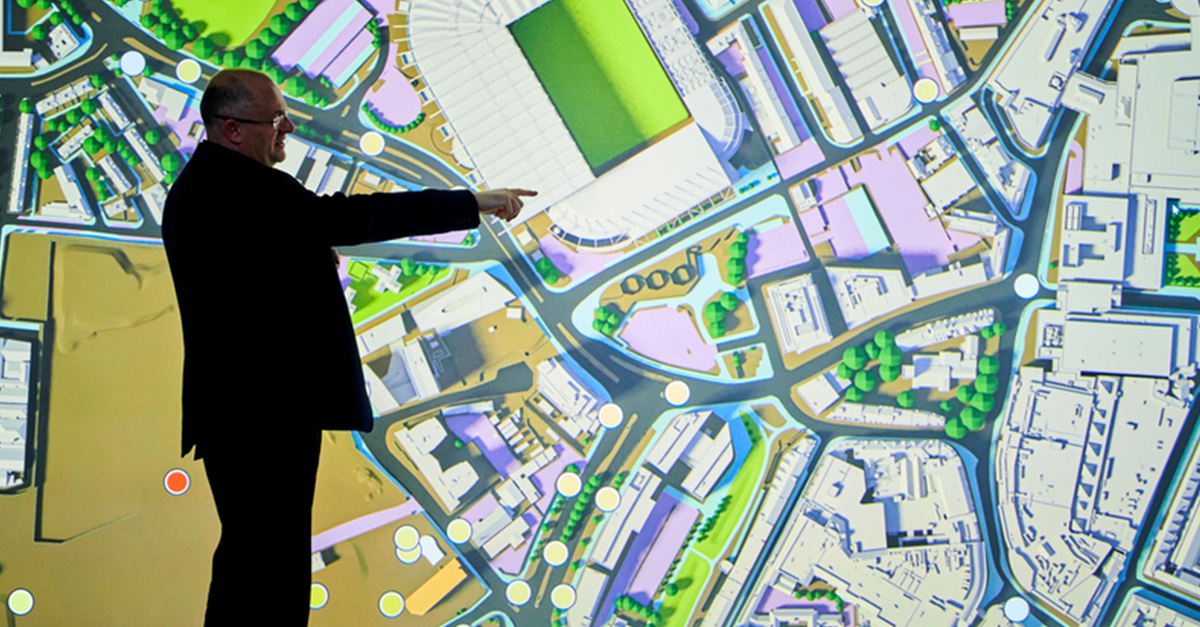From Cityscapes to Super Genes: How are our researchers safeguarding your future?
15 January 2020 | By: Amy Cousins | 2 min read
Having declared a climate emergency in 2019, we're devoted to lasting change.
We recognise the urgency of climate change. So much so, that we've committed to achieve net-zero carbon dioxide emissions by 2040. We strive to not just minimise our environmental impact through our daily practices, but to uncover intelligent and impactful solutions to global issues, such as climate change, through our research.
Cities are under pressure to become more resilient. But, what does this mean for our quality of life?
Just one of our research studies into the impacts of climate change unveiled the dilemma of balancing a reduction in greenhouse gas emissions with trying to increase cities’ resilience to extreme weather, without compromising people’s quality of life.
This study in particular focused on London, as one example of a rapidly growing city, and found opportunity in the development of properties in a small number of central locations.
The development of properties away from the Thames helps to mitigate flood risks and minimise transport emissions. However, this comes at a cost.
There is an overlap whereby the lowest heat hazard areas are usually areas with a high risk of flooding. Unfortunately, this led our researchers to the conclusion: homes will need to shrink or be developed in high heat risk areas.
So, what does the future look like for our cities?
In tandem with our research in London, we have created the UK’s largest urban experiment to equip us with data on how best to manage and develop the cities of the future.
Newcastle University has deployed 3,600 sensors across Newcastle-Gateshead, Sheffield and Bristol to identify how our cities work, as well as the impact climate change is having on them.
We’ve collected over a billion records so far on everything from energy use, rainfall and flooding to air pollution, traffic flow and social media activity.
Now the £12m project, funded through the Engineering and Physical Sciences Research Council, is being extended to three more major cities led by the universities of Manchester, Birmingham and Cranfield.
Phil James explains that this data will allow us a baseline, which we can use to monitor positive or negative impacts of any changes we implement.
However, it’s not just our cities that need safeguarding for the future, our bodies do too.
‘Superbug gene’ discovered 8,000 miles away from where it was originally found
A far cry from issues of urbanisation and climate change, Antibiotic-Resistant Genes (ARGs) were first detected in urban India. However, Professor David Graham’s research team has recently identified the spread of ARGs 8,000 miles away in the polar regions.
Arguably, one of the lesser-known threats to our existence is Antibiotic-Resistant Genes (ARGs). Professor David Graham has dedicated over 15 years studying the environmental transmission of antibiotic resistance, and his work shines a light on the rapid and far-reaching nature of the ‘Superbug Gene.’
His most recent findings stress now, more than ever, the urgency of finding a global solution. Particularly as ARGs typically target ‘last resort’ classes of antibiotics.
“What humans have done through excess use of antibiotics on global scales is accelerate the rate of evolution, creating a new world of resistant strains that never existed before.” Graham explains.
Through the overuse of antibiotics, faecal releases and contamination of drinking water has sped up the rate at which superbugs can evolve.
As such, the discovery of ARGs in an area with minimal human impact is a testament to the speed of global ARG spread. For more information, read the full press story complete with expert comment from Dr Clare McCann.
Find out more
Read the full press stories to find out more on each of these topics at our Press Office.